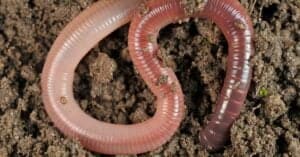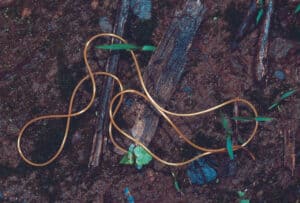Worms! To many people, these creepy crawly creatures are something they avoid completely. Others, enjoy collecting them for an upcoming fishing trip. Children, especially, love watching worms squirm around after rainfall. But where do these animals go when temperatures start to drop? Let’s learn all there is to know about where worms go in the winter.
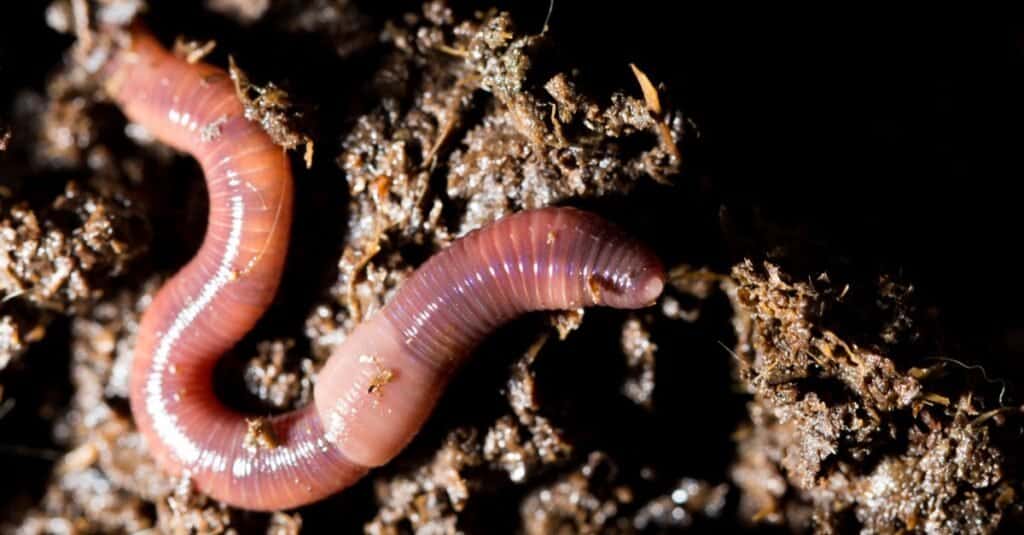
Worms can exist in freshwater, saltwater, and on land.
©schankz/Shutterstock.com
What Are Worms?
We know, this question may seem obvious. Many people are surprised to learn that worms are in fact, not bugs or insects. In contrast to worms, insects have exoskeletons that function as a kind of skeletal support system and shield their soft interior organs.
Worm skin is typically composed of collagen and doesn’t shed or molt, in contrast to the exoskeleton of bugs, which is composed of chitin and is shed to support growth. It can be particularly perplexing because numerous insects have adopted worm-related names; for instance, inchworms, tequila worms, silkworms, and glow worms are insect larvae, not worms.
There are many different species of worms, each with its own distinct traits, despite the reality that most individuals think of worms as little wiggling animals that live in the mud. Worms are long-bodied, legless invertebrate creatures.
Although most species are small and have distinct heads and tails, others can reach lengths of nearly 40 feet! Worms are able to sense their surroundings and respond properly because of their simple brain and nerve cord connection. Worms can exist in freshwater, saltwater, and on land.
Let’s talk about the three main types of worms.
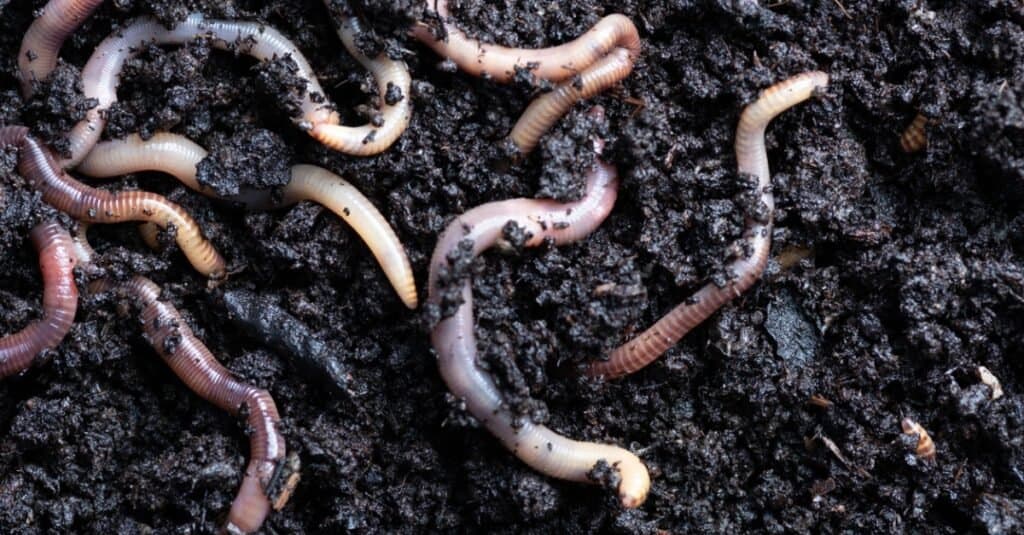
Worms are long-bodied, legless invertebrate creatures.
©iStock.com/Steve Jones
Types of Worms
The flatworm, roundworm, and segmented worm are the three most prevalent worm species. Invertebrates called flatworms are smooth and unsegmented. They are constrained to this flat shape because they lack specialized respiratory systems, which enable them to breathe through their skin.
Flatworms only have one body cavity, which they use for digestion and waste excretion. In contrast, roundworms have holes on both ends of their bodies, allowing them to consume from one end and expel waste from the other.
In addition to having body segments, segmented worms frequently feature parapodia, which resemble legs and aid in movement. The earthworm is the most well-known variety of segmented worm.

Unlike flatworms, roundworms have holes on both ends of their bodies, allowing them to consume from one end and expel waste from the other.
©iStock.com/Michael Edwards
Where Do Worms Live?
Let’s focus on the worms people come in contact with the most – earthworms! The earthworm lives in wet soil, however, some of them usually prefer sludge, like the kind of mud found in marshes or at the edges of lakes.
Earthworms can be seen in garden soil, as well as next to fresh and salty bodies of water. While some earthworms live lower in the soil, the majority live in the topsoil. Earthworms can even be discovered in the dirt that is present in tree branches in tropical areas.
Do Earthworms Hibernate?
The answers to these questions partly rely on the kind of worm you’re referring to. There are numerous varieties of worms. Do you know that there are more than 4,400 different species of worms in the world?
Over 2,700 different earthworm species comprise the thousands of different worm species. Only a small portion of those are present in the US. Still, at least 30 different species of earthworms call American yards their home.
The depth at which groundwater in soil often freezes in the wintertime is known as the frost line. It’s also referred to as the frost depth or freezing depth. Depending on the weather, the frost line changes. Latitude typically allows for an estimation. The frost line is deeper the further north you go.
Keeping Warm in Winter
The frost line in the United States can be as low as zero feet, typically in the south. It can be as deep as six feet or more in places like Minnesota. Wherever they inhabit, worms must tunnel to a location underneath the frost line to endure the bitterly cold weather.
For instance, night crawlers have the ability to dig down at least six feet. They live in tiny compartments at the bottom of the burrows they build when they scurry below the frost line. Worms coat the edges of their nesting rooms with a slippery mucus to keep them damp throughout the winter since their skin can’t breathe if it dries up.
Once worms have dug down deep enough, the soil temperature remains pretty stable, keeping the worms warm all winter. The worms are protected from the cold by the warmer soil that is present deep within the ground.
In contrast to some animals, night crawlers don’t actually hibernate during the winter. Nightcrawlers will periodically reappear on the surface amid warm spells in the winter until the weather turns chilly yet again. Worms migrate back to the surface as spring arrives.
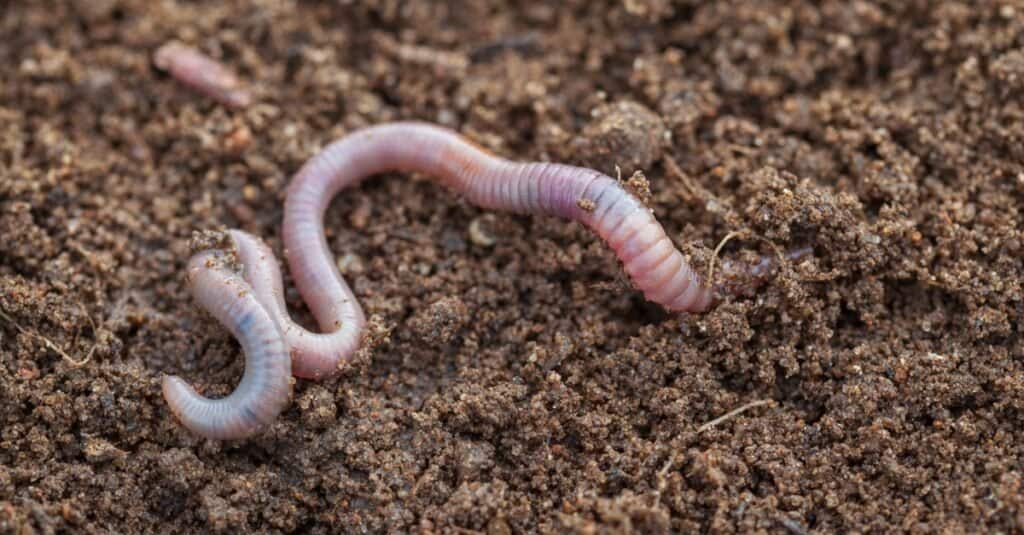
Worms must tunnel to a location underneath the frost line to endure the bitterly cold weather of winter.
©Maryna Pleshkun/Shutterstock.com
The photo featured at the top of this post is © iStock.com/Mik122
Thank you for reading! Have some feedback for us? Contact the AZ Animals editorial team.




